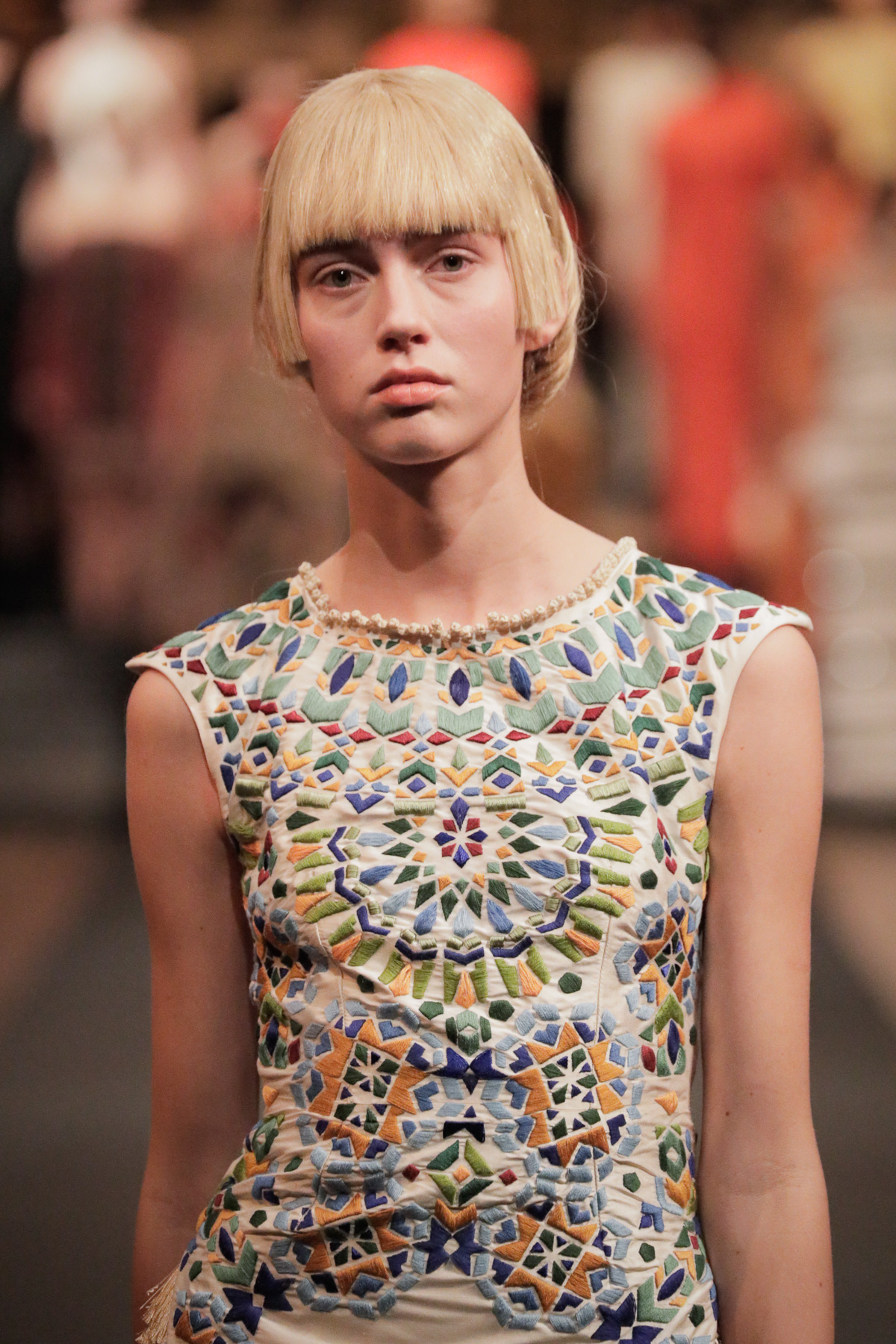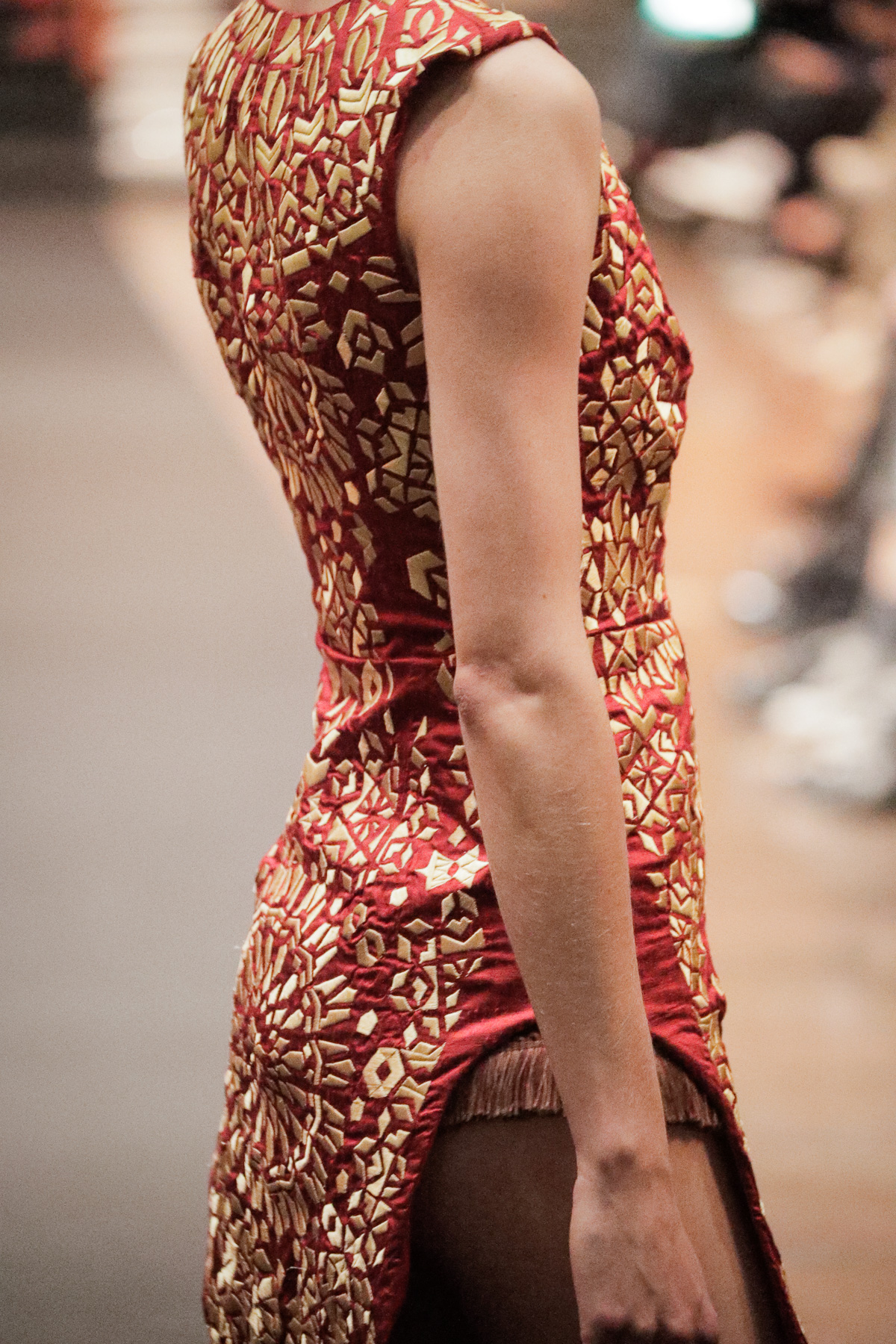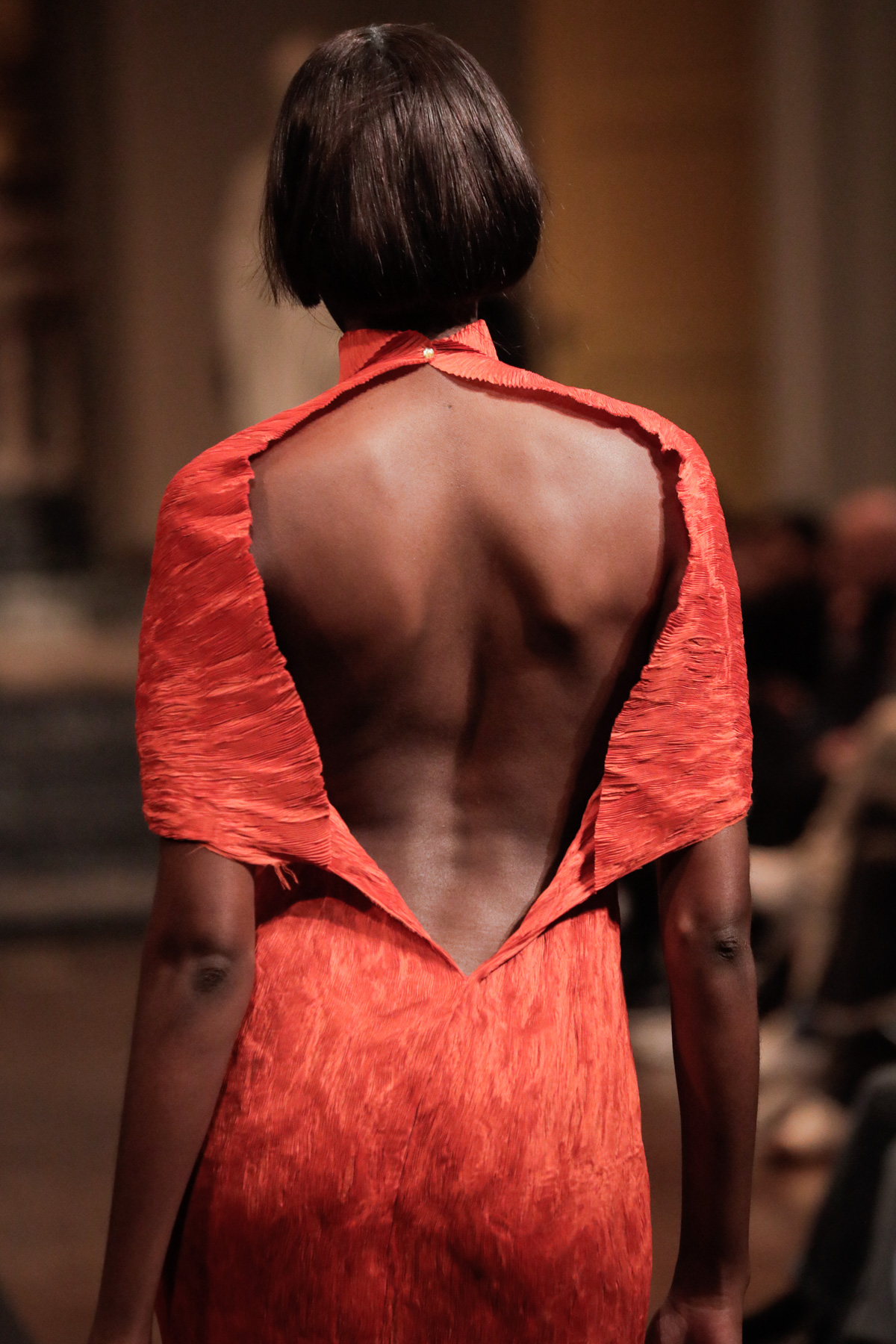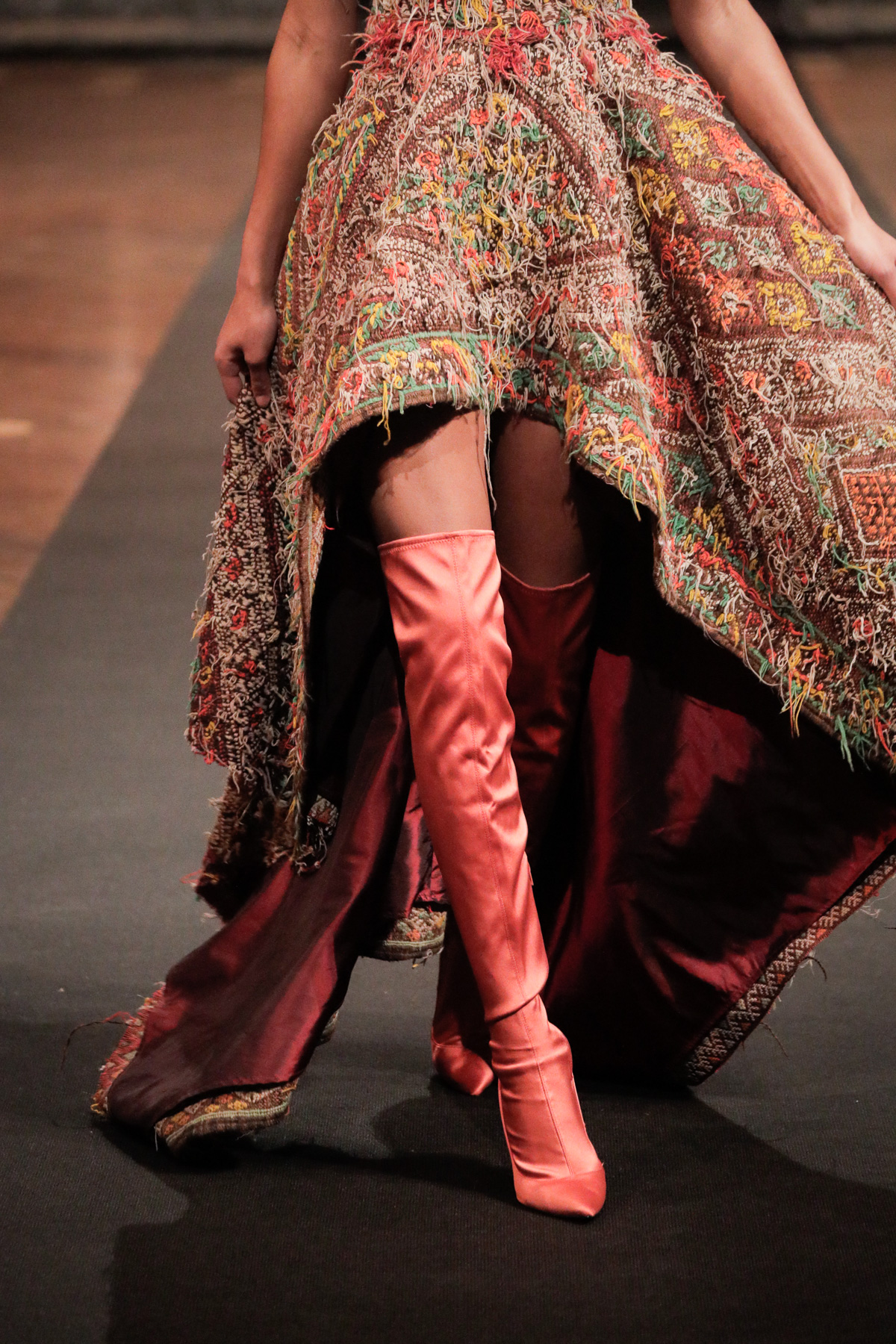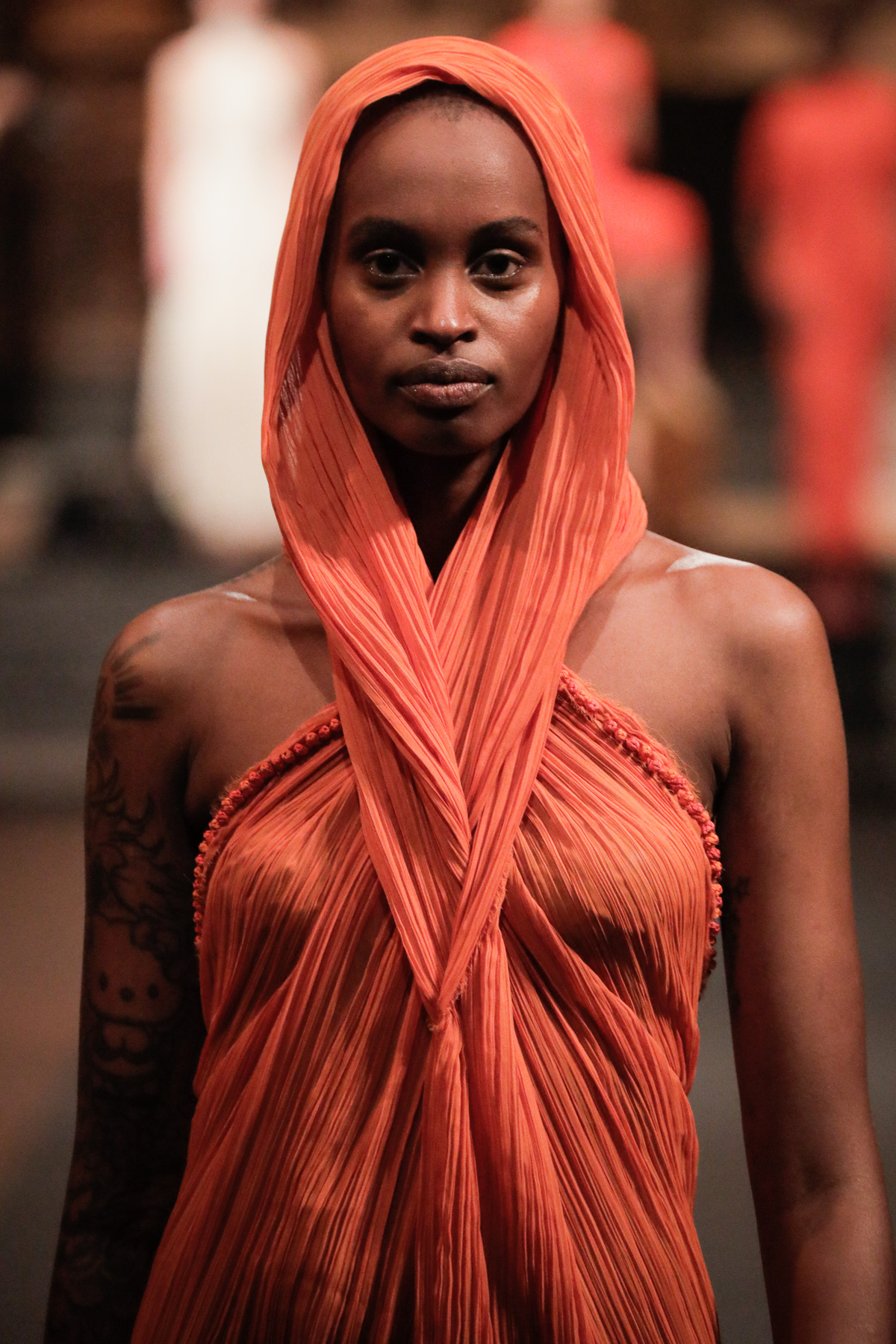Moroccan born couture mastermind Karim Adduchi has achieved a lot, having been featured on the Forbes 30 under 30 list in both Europe and the Middle East in 2018, not to mention his multiple editorial shoots for Elle. Taking some time out for preparing and conceptualising his new collection ‘Maktub’, Adduchi spoke to me about his design philosophy and his incredibly powerful collection ‘She has 99 names’:
It is evident that your Moroccan heritage plays an integral role in your design process which shines through in the beautiful collections you create. Why do you feel it is so important for you to represent your cultural background in the clothing you create?
In fashion or any artistic discipline, the expression has to come from a really deep feeling and connection. Growing up with my parents being tailors and seeing the fabrics, listening to the sewing machines and seeing the process I thought as a child that was the most normal thing to do. Make clothes. With time passing and being always away from my roots and home while I was growing up and moulding my personality as an artist and designer, I needed to have a strong foundation to hold on [to] and use it as a support to drive me through the days.
For me, that foundation is my heritage and personal story with making clothes. When I’m working with the fabrics I get the feeling that I am at home, and when it’s about where I come from it is even more meaningful. I always want to show who I am instead [of] who I could be. For me [it] is important to show transparency and honesty to the audience, and if I can create from my own experience [which forms] a bridge to connect to the global stage, it inspires me to not just work for me but for others. Eradicate the misconceptions of different cultures and create a sense of community always using the fashion lens and having meaning behind it. I’m here to live out loud and most important[ly] make women feel good with my clothes. Because that’s what my parents use to do.
It is apparent from your ‘She has 99 names’ collection that you truly feel that as a designer you, and I’m assuming the fashion industry as a whole, has a form of social responsibility. With this collection, I have read that you worked with people that aren’t part of the fashion industry such as housewives, students and refugees, is this a design process you plan on continuing into future collections?
I always wanted to keep that in my design process and I keep doing it. Because I am using an art form to bring people together. And fashion has a loud voice in our society and if I can use that voice to bring positivism and hope that means everything to me. You learn so much by teaching because you challenge yourself to make others understand your vision, and when you work with people that have a new, fresh point of view, that keeps you grounded and makes you grow and develop. The joy I get when people are enthusiastic and have a willingness to collaborate all together to make a show or a dress, that dress is not just a dress anymore. It is the legacy of a relation kept alive through time.

To my knowledge, you are currently based in Europe and I would just like to expand on the previous question. As attitudes towards refugees and foreign influences have turned sour amidst the rise of far-right movements in Europe, was your choice to work with refugees in the ‘She has 99 names’ collection to an extent a form of social commentary on the unjust treatment of these people?
My intention, of course, was to eradicate the conception behind “refugee” and bring them closer to people again by using the power of fashion. I know for myself the feeling of being away from where you belong to, not for the same reasons but the feeling of nostalgia was always present in my work. Not just the longing nostalgia, but also the positive hope in the new chapters and new beginnings. That’s why I named it “She has 99 names” because of the silver lining of the stories. What inspired me the most was understanding their feelings and translat[ing] that into the collection, but also the bravery of those people to be present in the designs. And because of that the collection was built up in 3 stages, fragility, strength and acceptance. Because in these 3 pillars our personas are based. It was a collection full of symbolism and metaphors, but also the beaut[y] of paradox. We all are one “our differences can be our bridges” which was at the epicentre of the collection.
You also collaborated with Karima el Fillali with your previous runway show, a stroke of genius I may add as it made the collection feel inherently African and far removed from the Eurocentric view on fashion that is often forced onto many African designers and creatives. Do you plan on collaborating with African artists/creatives in upcoming collections?
My intention will always [be] to shine [light on] our heritage and to combine [this] with present aesthetics, my desire is not to stick to the past, but [to] look into the past to know where I’m going. If you don’t know who you are it is difficult to know where you [are] go[ing]. And I love challenging my creative process by always having fresh collaborations and conversations. That has to have an intention and that intention again is to create and share stories through any art discipline. And music is a higher power, combined with fashion a celestial power that the audience can connect to. That show was honestly magic.
